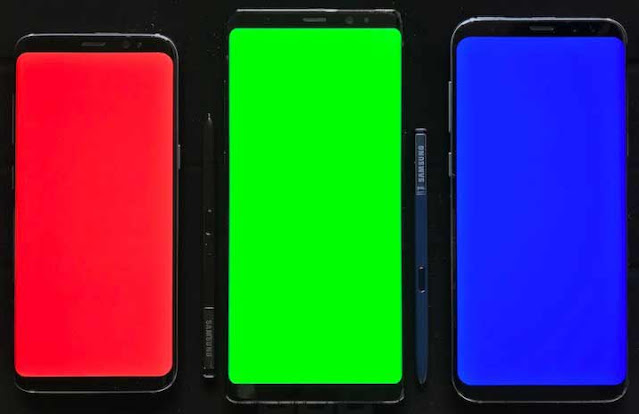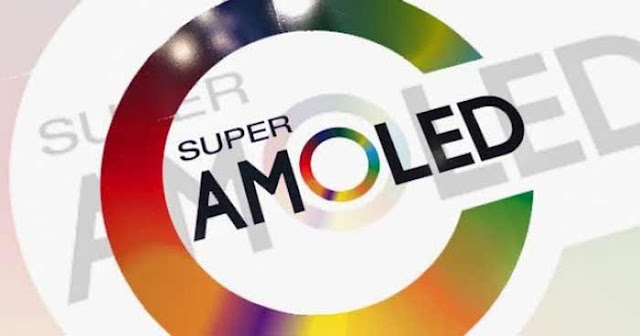The name Amoled Display stands for a display technology that is used in particular in smartphone models in the upper price segment. Amoled screens are also found in tablets, notebooks and televisions.
What is Amoled Display?
The term amoled is an abbreviation in which "AM" stands for "Active Matrix" and "OLED" stands for "Organic Light Emitting Diode". It is therefore an active matrix made of organic light-emitting diodes.
The typical characteristic of amoled display (and more generally
of OLED display) is that each LED represents an independent light source.
- Broken smartphone screen: How to replace it?
- Manage and accelerate your downloads with Free Dow...
- Create and manage your passwords securely with 1Pa...
- How to spot a Phishing email or Suspicious emails ...
- VGA extension or VGA Cable: still relevant?
- 5 tips for choosing your first Laptop
In contrast to OLEDs, the individual pixels in Amoleds are controlled via an active matrix. This is done by an electrical impulse that activates the light emitting diodes.
Each pixel is made up of a green, a blue and a red subpixel - depending on which subpixel is activated, the perceived color results. If a pixel is to display the color black, all subpixels remain switched off.
In addition, Amoleds are self-luminous. Since they do not require additional backlighting, very thin amoled screen can also be produced.
The lifespan of Amoled Display
The "service life" is the operating time of the amoled display, which passes on average until the original luminance has dropped to below 50 percent. As a rule, the blue sub pixels age first, which is expressed by a red or green color cast on the display.
This aging process can hardly be avoided, as the air humidity attacks the organic semiconductor material over time.
The temperature also has a decisive influence on the service life of the displays. Well-cooled light-emitting diodes with a low initial luminosity last longer than Amoleds operated with maximum luminosity and uncooled.
Read More Topic
- Broken smartphone screen: How to replace it?
- Manage and accelerate your downloads with Free Dow...
- Create and manage your passwords securely with 1Pa...
- How to spot a Phishing email or Suspicious emails ...
- VGA extension or VGA Cable: still relevant?
- 5 tips for choosing your first Laptop
When displaying white light, the average life expectancy of Amoleds at full brightness is between 5,000 and 12,000 hours. At lower brightness, the diodes last significantly longer.
What are the advantages of amoled technology?
Amoled display is characterized by a high-contrast presentation, rich and powerful colors and excellent black values.
The high contrast results from the fact that the screens do not require any additional backlighting. As a result, black pixels in Amoleds do not emit light. However, some critics find the color representation to be oversaturated and unnatural.
Since the diodes only send light when they are activated, Amoleds consume less energy than LCDs. This is especially true for the display of dark images. For the same reason, devices with an amoled display heat up less than those with an LC display.
Read More Topic
- Broken smartphone screen: How to replace it?
- Manage and accelerate your downloads with Free Dow...
- Create and manage your passwords securely with 1Pa...
- How to spot a Phishing email or Suspicious emails ...
- VGA extension or VGA Cable: still relevant?
- 5 tips for choosing your first Laptop
In addition, Amoleds and OLEDs score with a response time that is significantly shorter than that of LCDs. With some devices it is less than a microsecond - that is 1,000 times faster than with standard LCDs.
The image build-up works a little faster with amoled displays than with an OLED. In addition, the high-quality screens also achieve better values in terms of viewing angle stability.
Another advantage is the very thin design, which even enables flexible screens. This results in completely new areas of application, for example electronic newspapers or roll-up lighting.
Disadvantages of Amoleds display
The comparatively short lifespan is the biggest problem with amoleds display. In this respect they are clearly at a disadvantage compared to LCDs. This is because ordinary and no organic LEDs are used for the backlighting; these have an average operating time of around 30,000 hours.
Amoleds also lag behind in terms of luminosity. While organic light-emitting diodes reach a maximum of 100 lumens per watt (lm/W), ordinary LEDs achieve 200 to 300 lumens per watt. Due to the higher light output, some users are of the opinion that the display on LCDs looks more natural.
In addition, amoled screens are very sensitive to some substances. If the organic material comes into contact with water (through humidity) or oxygen, for example, the light-emitting diodes are quickly damaged. The typical result is "dark spots", areas that are getting bigger and bigger and not glowing.










0 Comments